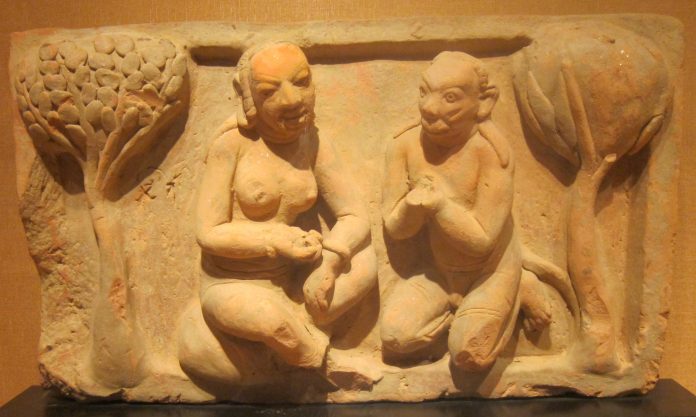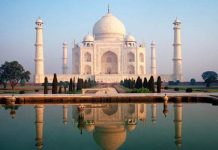Top 10 Ancient Indian Scientific and Mathematical Works
India has a rich history of great mathematicians/astronomers in ancient times like Brahmagupta, Varahamihira, Aryabhata, Baudhayana, who have penned some great works. Charaka is known the father of Indian medicine. Aryabhata was the first in the line of great mathematician/astronomers from the classical age of Indian mathematics and Indian astronomy. Most of them were naturally priests and their mathematics was mostly related to astronomy and religion. This was needed by them to advise people to calculate the right time to sow their seeds and to perform religious rituals. This is a compilation of top 10 ancient Indian scientific and mathematical works.
Sisyadhivrddhida
Sisyadhivrddhida was penned by Indian mathematician/astronomer Lalla in 8th century A.D. He belonged to a family of astronomers. The book corrects several assumptions made by Aryabhaṭa in Aryabhatiya. Sisyadhivrddhida itself is divided into two parts Grahadhyaya and Goladhyaya. Grahadhyaya from chapter I to XIII addresses planetary calculations, problems pertaining to motion of earth, eclipses, rising and setting of the planets, sun, moon, its various phases, planetary and astral conjunctions, and complementary situations of the sun and the moon. In the second part titled Goladhyaya, he addresses graphical representation of planetary motion, astronomical instruments, spherics, and stresses on corrections and rejection of flawed principles.
Shulba Sutras
Shulba Sutras contain instructions for traditional Hindu rituals and also instructions on geometry related to fire-altar construction for those rituals. There are a total of 8 Shulba Sutras. The four major mathematically significant Shulba Sutras were written by Baudhayana, Manava, Apastamba and Katyayana. These texts date from 800 B.C. to 200 A.D. They contain discussions on Pythagorean theorem, Pythagorean triples, square roots and numerals. Baudhayana Shulba sutra details the construction of geometric shapes such as squares and rectangles. It was considered important to perform rituals in altars of shapes that signified the religious ideas of that period. It is believed that manipulation of the shapes of altars lead to the creation of geometry and mathematics.
Brihat-Samhita
Brihat-Samhita is the second most important work of Varahamihira. It is considered an ancient encyclopedia, which covered a variety of subjects ranging from astrology and astronomy to geology, sociology, architecture and gemology. The topics discussed in his work include planetary movements, astrology, rainfall, winds, clouds, flowers, plants, earthquakes, meteors,eclipse halos, rainbows, dust storms, commodities and their prices, house and temple building, images in temples, cement, gardening, animals, human marriage, social life of human beings, their relations ships, life rituals, gems and pearls and many more on a variety of other subject. It is a vast compilation of 106 chapters describing every aspect of human life.
Pancha-Siddhantika
Pancha-Siddhantika is the main work of Varahamihira dated 575 A.D. It is a compendium summary of five previous works, which no longer exist, namely Surya Siddhanta, Romaka Siddhanta, Paulisa Siddhanta, Vasishtha Siddhanta and Paitamaha Siddhantas. Surya Siddhanta which translates as doctrine of sun was earlier written by Laṭadeva. It summarized motion of planets, sun, moon, their postions, time, solar and lunar eclipses and their shadow projection, etc. Romaka Siddhanta is an astronomical treatise that summarized the works of ancient Romans. Paulisa Siddhanta, another astronomical work summed up the works Greek scholar, Paul of Alexandri. Vasishtha Siddhanta described the astronomical works of sage Vasishth. It identified the motion of planets and other heavenly bodies and accurately predicted their positions in the past, present and future. Paitamaha Siddhanta is believed to be a vedic text from Brahma Yug and 5 verses about the Brahma Siddhanta have survived in Pancha-Siddhantika.
Brahmasphuṭasiddhanta
Brahmasphuṭasiddhanta written in 628 A.D. is the best known work of Brahmagupta. He was the first to suggest a good understanding of mathematical zero and mathematical rules associated with it. It also comprises rules of manipulating positive and negative numbers, computing square roots and solving linear and quadratic equations. The famous Brahmagupta’s theorem suggests that, “if a cyclic quadrilateral is orthodiagonal (i.e., has perpendicular diagonals), then the perpendicular to a side from the point of intersection of the diagonals always bisects the opposite side.” Brahmagupta was also the head of astronomical observatory at Ujjain. Astronomical theories suggested by him in the book include critiques and disagreements with earlier work by other authors. Brahmagupta suggested illumination of the moon by the sun, refuting the idea maintained in scriptures: namely, that the moon is farther from the earth than the sun is.
Yuktibhasa
Yuktibhasa is a Malayalam treatise on mathematics and astronomy written by Jyesthadeva of the Kerala school of mathematics in 1530 A.D. It is a compilation of discoveries made by Madhava of Sangamagrama, Nilakantha Somayaji, Parameswara, Jyeshtadeva, Achyuta Pisharati, four of whom belonged to the same school except Parameswara. This work was unparalleled in the sense that it contained proofs and derivations of the theorems presented, unlike other books in the list. The first half of the work (chapter 1 to 7) includes mathematics with topics covering logistics, fractions, linear indeterminate equations, infinite series and approximations for the ratio of the circumference and diameter of a circle, infinite series and approximations for sines, several series derivations for π. The book covered a wide range of topic even on advanced mathematics, which did not come to the western world until the 18thor 19th century. The other half of the text (7 to 17) covers astronomy with discussion on subjects of planetary orbits, ascension, declination, directions and shadows, spherical triangles, ellipses and parallax correction.
Tantrasangraha
Nilakantha Somayaji was an astronomer and mathematician from the Kerala school of astronomy and mathematics. His most important work was Tantrasangraha in 1501 A.D., which was an important astronomical work consisting of 432 verses divided into 8 chapters. In this book, he revised Aryabhata’s model for the planets Mercury and Venus. The calculation of the centre for these planets remained accurate until the time of Johannes Kepler in the 17th century. Some of the important astronomical elaborations given in the book include need for astronomical computation, sun’s position on the celestial sphere, calculation of eclipses,calculation of latitudes of sun, moon and diameter of earth’s shadow during lunar eclipse. There are also mathematical descriptions of basic operations, determining squares and square roots of numbers and concepts of positive and negative numbers. A conference was conducted on the 500th Anniversary of Tantrasamgraha organized by the Department of Theoretical Physics, University of Madras in Shimla in March of 2000.
Sushruta Samhita
Sushruta Samhita is an ayurvedic treatise about surgery in ancient India, which is an original work by Sushruta. Sushruta Samhita as it exists today is not in the original form as written by Sushruta. It initially consisted of five divisions, viz., sutra, nidana, sharira, chikitsa, and kalpa and named by him as Shalya Tantra. Later additions of three more division of shalakya, bhuta-vidya and kalamara-bhrtya took the total to eight divisions, compiled together and named Sushruta Samhita as we know it now. The whole compilation of Sushruta Samhita is dated back to 6th century B.C. The compendium has detailed description of 1120 different illnesses, 700 medicinal plants, study of human anatomy, various surgical techniques and a variety of surgical instruments. The book covers all fields of surgical branches like general surgery, eye, ortho-dental, obstetrics, urology, orthopedics, etc. Some of the most notable surgical procedures described are rhinoplasty (cosmetic surgery to improve the appearance of nose), lobuloplasty (repair of torn ear lobule) and different kind of skin grafts. There is also detailed description on cauterization, management of pain, traumatic wounds, burns and fractures. It was translated to Arabic in 8th century A.D. as Kitab-i-Susrud.
Charaka Samhita
Charaka Samhita written by Charaka is an ancient Indian Ayurvedic encyclopedia of Medicine. Caraka is considered the father of Indian medicine. His works have been dated back to 100 B.C. to 100 A.D. It encompasses the precious principles of ayurvedic therapeutics and fundamentals of Ayurveda. The existing text has eight sections totalling 120 chapters. Charaka Samhita contributes uniquely to the vast area of Ayurveda as it has a logical approach to the cause and remedy of the diseases and it introduces the objective methods of clinical examinations. The largest part of the Charaka Samhita describes herbs for treating various conditions. The herb formulas described in the Charaka Samhita are said to be given by Indra to the rishis and then recorded in this text.
Aryabhatiya
Aryabhatiya is the only surviving work of the 5th century Indian mathematician/astronomer Aryabhaṭa. Aryabhata wrote Aryabhatiya when he was only 23 years of age, and it was due to his efforts astronomy was delinked from Mathematics. It is claimed that Aryabhata was born in 476 A.D. and wrote this magnum opus in 499 A.D. Aryabhatiya is an astronomical treatise of 118 verses written in a poetic form, of which 33 verses are concerned with mathematical rules. It is important here to point out that no proofs are contained with these rules, and this is perhaps a primary reason for the neglect by western scholars. Topics discussed in mathematical verses of the Aryabhatiya were arithmetic, algebra, trigonometry with tables of sines and geometry. His verses use a geocentric model of the solar system with sun in the middle and earth and moon revolving around it. Aryabhata also affirmed that moon, planets, and asterisms shine by reflected sunlight. The work of Aryabhata was also extremely influential in India and many commentaries were written on Aryabhatiya by future astronomers and scholars.











































